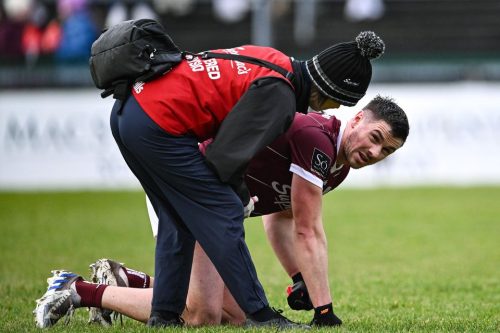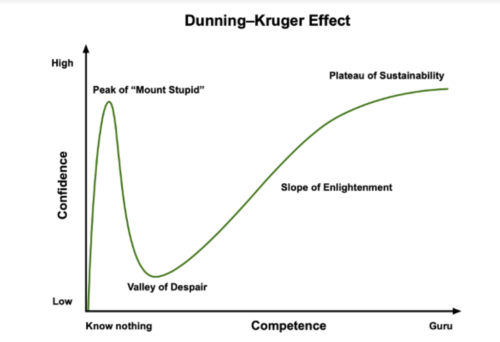
Kaizen in Everything. But Why?
“The only true test of intelligence is if you get what you want out of life.” – Naval Ravikant
They say that confidence is key. Whether you’re approaching a member of your desired sex, presenting to an audience, stepping on-stage or taking a penalty in front of thousands of people, it is the single, most desirable and useful trait to possess.
Confidence in yourself. Confidence in your ability to execute. Confidence in your ability to achieve success. If you don’t have it, it’s going to be very unlikely that you will come away from the situation, having achieved the desired outcome.
So then, as coaches of performers, should our overarching goal not always be, to instill our athletes with confidence?

Sometimes as practitioners, we get carried away with objective metrics in the gym or on the pitch. How much weight did they lift? How fast did they move that bar? How much ground did they cover? How quickly did he change direction? Sometimes we get so carried away, that we forget that it’s people that we’re coaching, not specific qualities. Not specific adaptations and not specific injuries, but people.
The only valuable adaptation that we’re actually seeking, is confidence. The athletes need to be confident that they can perform at a high-level. We need to be confident that they can do so too. The physio needs to be confident that they won’t get injured and the head coach needs to be confident that the team will win.
Sure, hitting personal bests in the gym and hitting speeds on the pitch, that a few months ago seemed unimaginable, will help with this collective confidence. But they are just tools that eventually lead to our athletes having the confidence to then go out and get it.
Do we need to have confidence in our own training program in order to have confidence in our players? Probably. Do the athletes also have to have confidence in us, in order to have confidence in themselves? Probably. Does fitness testing help us all to have confidence in the arduous training process we’ve just been through? Yes. But is it the only way we can instill confidence in ourselves? Absolutely not.
Ok then, what are the other ways that we can measure our performance, if we’re not to do any specific fitness testing?
Well if we are extremely diligent in our athlete monitoring, we won’t have to put our athletes through the dreaded “Fitness-testing day”, which will likely bring about an unwanted stress response. This will come in the form of both psychological (fear of failure) and physical (pushing the body to its limits) stress. The interaction between both of these components will then put our athletes at a heightened and unnecessary level of injury-risk.
By using consistent tracking and monitoring, we can reduce the risk of injury and make our athletes more comfortable in the process. This will make them more able to get the most out of their training, whilst still offering them a useful metric to both assess their recovery and their level of improvement throughout the training process.
Tests that are suitable for tracking and are commonly used for athlete monitoring include the Countermovement Jump, Squat Jump, Broad Jump, 10m sprint or 505 Agility test. These tests are time-efficient and energy-cost-effective, whilst also being easy to implement on a weekly, bi-weekly or monthly basis. Repeated exposure to these short tests will also bring about a lot less psychological stress for our athletes. The very thing that we should be looking to reduce, if we’re looking to chase adaptation on the field.
But again, it may be possible, when looking at these measurements, to get caught up amongst all the data. A more useful way to assess and improve your athlete’s confidence is undoubtedly just to talk to them. How are you feeling? How do you think you’re performing at the moment? What are the main strengths of the team? Where do we need to improve?

Ask for direct feedback. You’ll be surprised by the answers that your athletes come up with, and having you ask these personal questions will show them that you genuinely care about them. Knowing that you have their best interests at heart is an underrated coaching skill. It creates better buy-in from your athletes for the program, and thus improves their confidence in you and the entire coaching staff. This in turn will hopefully lead to them being confident in the level of work that they’ve put in over the season, which then leads to more confidence on gameday.
So, the moral of the story is to get to know your athletes. Use positive language and facilitate their development by involving them in the coaching process. Talk to them and find out what makes them tick. Once you actually know them, you’ll be a lot better equipped to get the most out of them during the training process.
“Don’t miss the forest for the trees.”

“The only true test of intelligence is if you get what you want out of life.” – Naval Ravikant

So, we can see that when it comes to our training, a certain volume of work when paired with adequate recovery is positive for our development, but if that same intensity of work is mismanaged and spiked, then the same exercise intensity can be toxic to the athlete.

Unfortunately, it takes a fall from the peak of mount stupid, on top of the Dunning-Kruger curve, for many of these lessons to land home.
Here to help you achieve your health and performance goals.
At Petey Performance, I’ll assist you every step of the way. What’s stopping you?
Take ownership today.
© 2021 All Rights Reserved
Subscribe to Petey Performance and get updates on new posts plus more exlusive content.